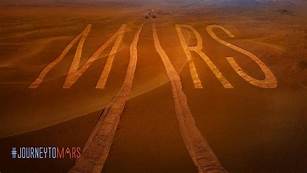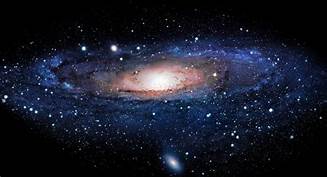Let's explore Mars!
What will the future mars exploration be like?"Mars is there waiting to be reached"It's very likely that we'll see another space race again and this time only to mars in early 2033. The priva...

Planets
Planets are the heavenly bodies that revolve around the Sun in elliptical orbits. They are much smaller than the stars and do not have their own heat and light. They shine because of the reflected light from the sun and appear larger since they are closer compared to other stars. They are named planets which means"wanderers" in Greek language. There are eight planets in our solar system namely: Mercury, Venus, Earth, Mars, Jupiter, Saturn, Uranus and Neptune. Their elliptical path lies almost at the same plane with sun at one of it's two foci. According to new definitions of planets by IAU set in 2006, a planet is a celestial body that:
1. is in orbit around the Sun,
2. has sufficient mass to assume hydrostatic equilibrium,
3. has "cleared neighborhood" around its orbit.
The Pluto was not considered a planet anymore due to these reasons:
1. It's mass is very small compared to that of the other planets,
2. It's orbit doesn't lie in the same plane as that of the other planets,
3. It's orbit coincides with that of Neptune.
The planets of our solar system are divided as inner planets or terrestrial planets and Outer planets or the Jovian planets. The inner planets are those planets inside the asteroid belt. They include Mercury, Venus, Earth and Mars. They have a solid surface and support no ring system. The planets Mars is however expected to have rings in few hundred years since it's Moon Phobos is approaching the Roche Limit. The inner planets have few or no moons and are comparatively smaller in size. Three of them(except Mercury) have atmospheres substantial enough to generate weather; all have impact craters and tectonic surface features such as rift valleys and volcanoes. Unlike the inner planets, the Jovian planets are very massive, support ring systems, mostly gaseous as well as have large number of moons. The Jupiter is often referred to as "the star never formed" due to it's massive size and composition.

Satellite:
A satellite is a heavenly body which revolves around the planet in it's own orbit. There are two types of satellites namely: Natural and artificial satellite.
1. Natural satellite:
A satellite which is made by nature and revolves continuously around the planet is called natural satellite. Our Earth has one such satellites: Our Moon. The no. of satellites of other planets are:
a. Mercury-0 e. Jupiter-67
b. Venus-0 f. Saturn-62
c. Earth-1 g. Uranus- 27
d. Mars-2 h. Neptune-14
The Moon
Moon is the natural satellite of the Earth. The diameter of the Moon is 3456 km. Gravitational force of the earth holds Moon in it's orbit. The Moon has no air and water. It's surface is covered with hard and loose dust, craters and mountains.It is at a distance of 382400 km from Earth. It doesn't have it's own heat and light rather reflects the light of the sun and appears to be glowing. The moon completes its rotation around the Earth in 27.33 days. This time is called 'sidereal period'. the relative density of Moon is 3.3. The moon rotates around it's own axis in every 27 days. As a result it doesn't appear to be moving at all. It is called synchronous rotation.
Differences between Sidereal and Synodic Months period:

2. Artificial satellite:
Those satellites that are made by humans and launched into space are called artificial satellites. For eg. SPUTNIK, INSAT, METSAT, etc. They revolve around the planet from a fixed distance. They are sent into space for the following purposes:
1. For the communication of radio. television, and telephone signals across the world.
2. for weather forecasting.
3. for spying or military purpose.
4. for study of solar rays and cosmic rays as well as study various regions of the Earth and Space.
There are other particles that keep floating in space. When viewed from earth they look beautiful at the same time they may even cause potential damage to the planet. Therefore, it's necessary to learn more about these objects, their composition and most importantly their orbits. While Jupiter saves us from most of the comets it is also responsible for pertubing the orbit of asteroids towards Earth. This raises another question in astronomy:"Jupiter a friend or Foe?" That's a question to be answered in a long run but first let's know the composition of Asteroids, Comets and Meteors.
Asteroids-
The rock and metal objects present between Mars and Jupiter and revolve around he sun are called asteroids. There are as many as 100000 asteroids in our solar system. The biggest asteroid is Ceres and the smaller ones could be the size of pebble. The other asteroids are: Juno, Vesta, Eros, etc. The other asteroids like Aten, Amor, Apollo, etc. are located outside the asteroid belt. They move at a speed of 25 m/s and intersect with Earth's orbit which increases chances of collision with Earth. The CENOS in United States is one of those organization tracking movements of these minor planets. If you would love to hunt few of those asteroids( discover asteroids) you could be the part of Asteroid search campaigns.
Meteors (falling stars or shooting stars)
The pieces of stone or Metal which enter the Earth's surface are meteors. These are flashes of light in the sky which disappear shortly after lighting up. They could be the pieces of asteroids that have collided. When an heavenly body enters Earth's atmosphere with high speed, friction is developed between body and air. Due to this friction, heat is produced in it, and a burning object is seen in atmosphere as a streak of light. Sometimes the big meteor do not completely vaporize and reach the earth's surface. This object is called meteorite. A large number of meteors fall near poles of the Earth known as the meteor shower. An extremely bright meteor can be termed as the 'fire ball'. Depending upon the composition of materials, meteors are of three types:
1. Stony meteorite,
2. Iron meteorite
3. stony iron meteorite.
( A meteorite fall in Arizona created a huge crater which shows large meteors could be a risk for us.) There are a lot of meteor showers that happen every month. Recently, there was etta-aqaridds meteor shower and we'll soon observe Arietids meteor shower. These meteor showers are named based on which constellations they appear.
Comets
Comets are mostly located in the Kuiper belt and oort cloud region of our solar system. It appears broom like tailed structure revolving around the sun. It is made of of ice, gas and dust. The head is made up of ice. The head of comet is called coma and the central part is called the nucleus. As a comet approaches the sun it develops a long tail that is visible to us. They do not have their own light rather reflect the light of Sun. Some comets are visible after a long period of time and loses it's tail as it moves away from the sun. Some of the most famous comets are shoemaker-levy, Halley's comet, etc.
Galaxy
Space contains a lot of stars that are grouped together as galaxies. The galaxy can be of different types: spiral, elliptical, irregular galaxy. It is a vast system of stars, dust particles, and gases isolated from similar structure in space. These galaxies revolve around common center known as the galactic center. There are about 10^11 galaxies in the universe. our galaxy 'The Milky Way Galaxy' falls under spiral galaxy and is about 1.33*10^11 times heavier than Sun.
Constellations
In contemporary astronomy, IAU recognizes 88 constellations in the sky. Each of these constellation are the region of the sky bordered by the arcs of right ascension and declination. Together they cover the entire celestial sphere. Unlike this, it is also defined as the group of stars resembling a particular shape. The brightest star in the constellation is named as Alpha star of that constellation. The twelve of those constellations which lie on the solar path are called zodiacs. They lie at 9 degrees on either sides of the ecliptic. There are various superstitions related to zodiacs which must be discarded. They are just used in order to find time at night, forecast weather and identify other stars. Navigators find their locations in sea based on various zodiacs. Some of the most famous constellations include: Orion( The hunter), Ursa major(Big bear, Saptarishi), Ursa minor(Little bear), Andromeda(Princess of Eithiopia), Hercules(son of zeus), etc.
Stars
All the twinkling objects in the night sky are mostly stars. They have their own source of light and nuclear fusion keeps going inside a star. It is made up of hydrogen and helium mostly. There are various sequence of stars such as the main sequence, pre-main sequence and post-main sequence. The color of star changes in order of VIBGYOR. The size and life of star depends on amount of energy produced and mass of stars. Though very big they appear smaller due to prolonged distance from Earth.